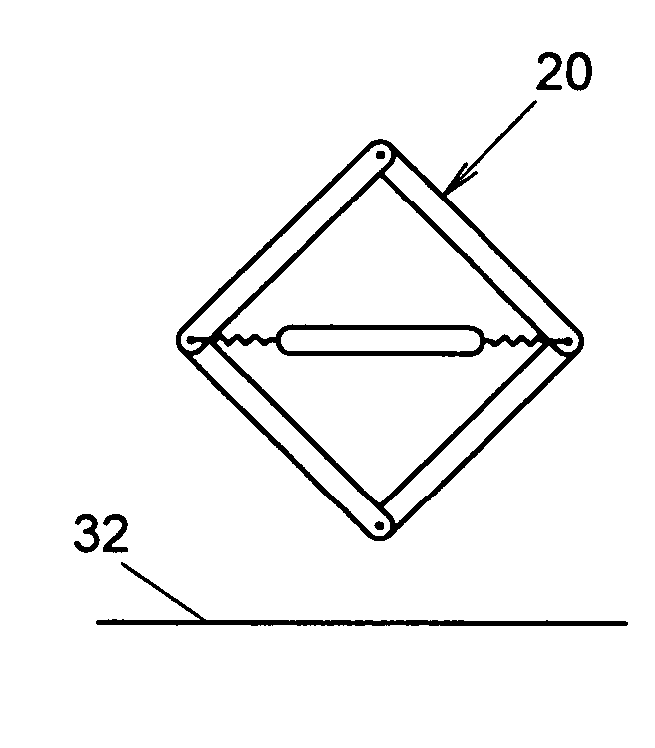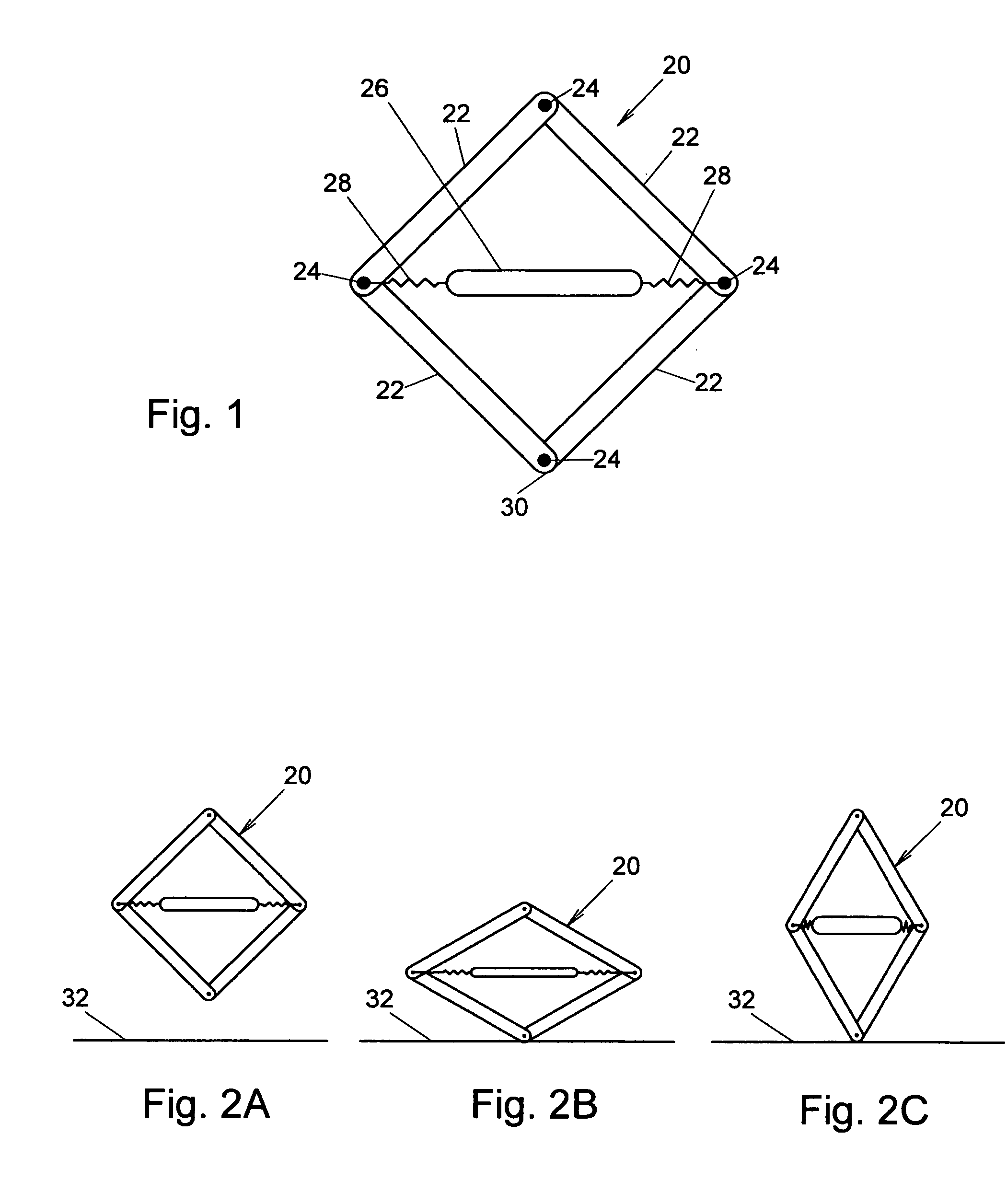Dynamic legged robot
a robot and dynamic technology, applied in the field of legged robots, can solve the problems of large amount of computation, large range of mobility of the robot that must be tethered to a power supply, and relatively slow movemen
- Summary
- Abstract
- Description
- Claims
- Application Information
AI Technical Summary
Benefits of technology
Problems solved by technology
Method used
Image
Examples
Embodiment Construction
[0032] A robot is a machine that includes the following components: structure, actuator, power source, sensor, and controller. A mobile robot is a robot that can travel from one location to another. The machines described herein are a class of mobile robots that use legs for locomotion. The following sections describe the various robot components that comprise the invention of a dynamic legged robot.
FIGS. 1 and 2A-2C—Embodiment of Robot Structure
[0033] A preferred embodiment of the robot structure 20 of the present invention is shown in FIG. 1. A robot structure is the primary mechanical structure that provides support for a robot's actuators, sensors, power sources, appendages, and other components. The robot structure 20 is a Closed Kinematic Chain, consisting of links 22 and pivots 24. In this embodiment there are four links 22 connected by four pivots 24. An actuator 26 is connected through springs 28 to the robot structure 20. The actuator 26 contracts when activated and ther...
PUM
 Login to View More
Login to View More Abstract
Description
Claims
Application Information
 Login to View More
Login to View More - R&D
- Intellectual Property
- Life Sciences
- Materials
- Tech Scout
- Unparalleled Data Quality
- Higher Quality Content
- 60% Fewer Hallucinations
Browse by: Latest US Patents, China's latest patents, Technical Efficacy Thesaurus, Application Domain, Technology Topic, Popular Technical Reports.
© 2025 PatSnap. All rights reserved.Legal|Privacy policy|Modern Slavery Act Transparency Statement|Sitemap|About US| Contact US: help@patsnap.com



